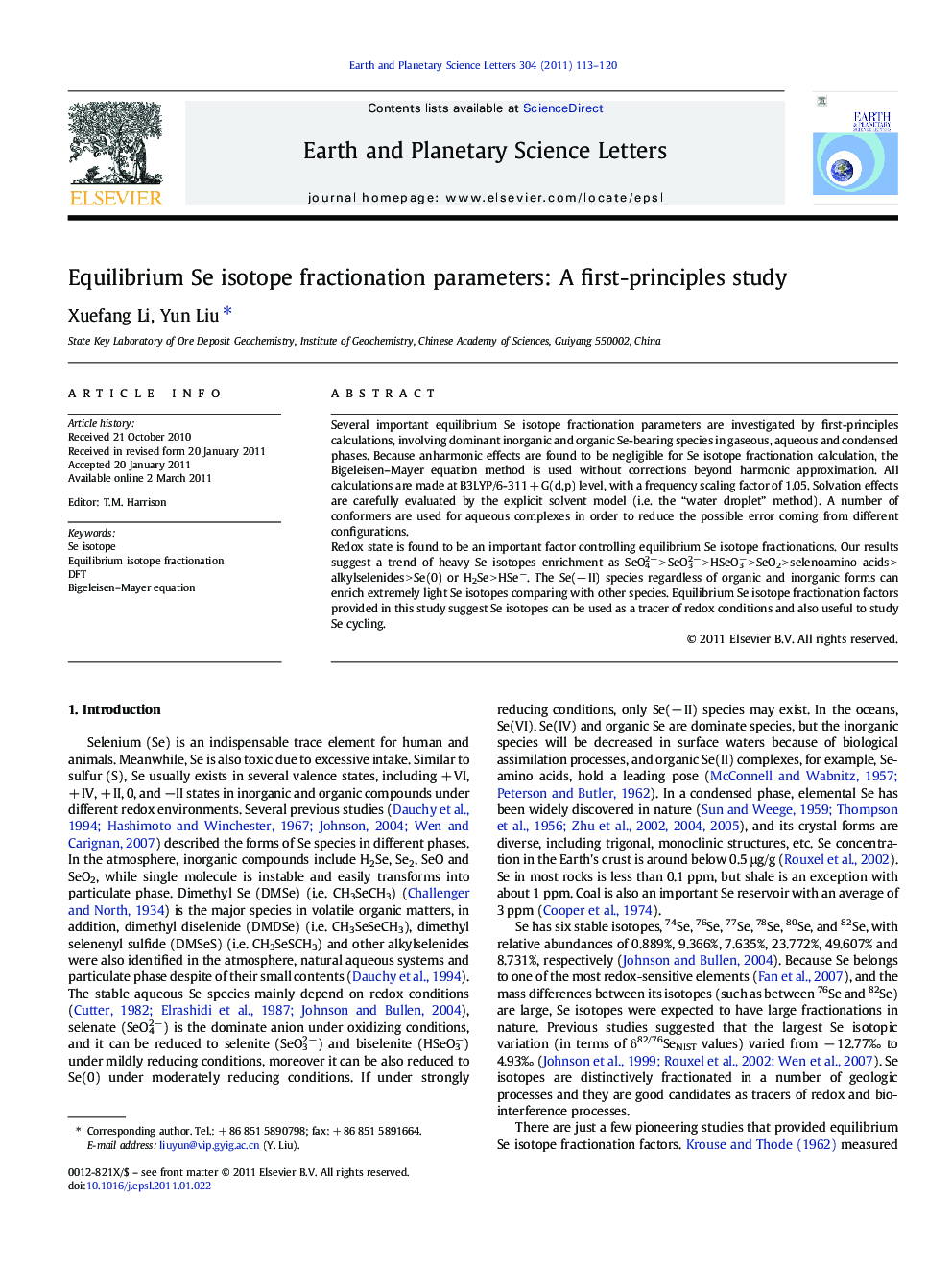| Article ID | Journal | Published Year | Pages | File Type |
|---|---|---|---|---|
| 4678202 | Earth and Planetary Science Letters | 2011 | 8 Pages |
Several important equilibrium Se isotope fractionation parameters are investigated by first-principles calculations, involving dominant inorganic and organic Se-bearing species in gaseous, aqueous and condensed phases. Because anharmonic effects are found to be negligible for Se isotope fractionation calculation, the Bigeleisen–Mayer equation method is used without corrections beyond harmonic approximation. All calculations are made at B3LYP/6-311 + G(d,p) level, with a frequency scaling factor of 1.05. Solvation effects are carefully evaluated by the explicit solvent model (i.e. the “water droplet” method). A number of conformers are used for aqueous complexes in order to reduce the possible error coming from different configurations.Redox state is found to be an important factor controlling equilibrium Se isotope fractionations. Our results suggest a trend of heavy Se isotopes enrichment as SeO42− > SeO32− > HSeO3− > SeO2 > selenoamino acids > alkylselenides > Se(0) or H2Se > HSe−. The Se(− II) species regardless of organic and inorganic forms can enrich extremely light Se isotopes comparing with other species. Equilibrium Se isotope fractionation factors provided in this study suggest Se isotopes can be used as a tracer of redox conditions and also useful to study Se cycling.
Research Highlights► Several equilibrium Se isotope fractionation parameters are provided. ► Redox state is found to be an important factor controlling equilibrium Se isotope fractionations. ► Se isotopes can be used as a tracer of redox conditions.
